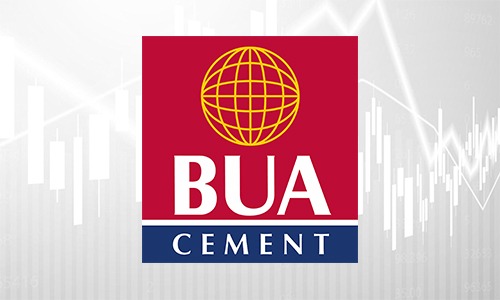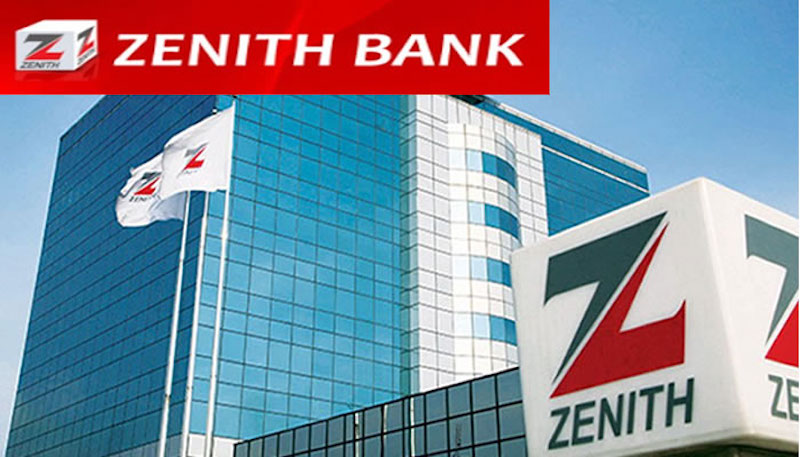Story behind the figures
University Press Plc: Slow-paced profitability

Introduction
University Press’ result for the 2023 financial year was not as great as that of 2022, both in absolute growth terms and in terms of profitability ratios. The company’s sales generation ability slowed down a bit, as did its profit retention capabilities.
Also, profitability ratios were not as sterling as those of the preceding year’s, even though these ratios were in and of themselves applaudable. This slowed profitability is keeping in trend with what most other Nigerian companies experienced for the 2023 FY.
Growth indices
Growth indices for the 2023 financial year were not very impressive. For instance, there was a six percent decline rather than a growth in the company’s ability to generate sales. Gross earnings for the year stood at N2.17 billion in 2023, less than N2.3 billion in the erstwhile year. This is as compared to a 62.5 percent increase in sales revenue the year before.
The company also recorded a lower level of pre-tax profit for the year under review than it did in the prior year. Pre-tax profit was N222 million, about 38.5 percent less than the N361 million profit recorded in 2022. After-tax profit followed the same pattern, dipping by 31.4 percent to N142 million.
Despite these lower growth rates, the company paid its shareholders dividend for the year, showing consistency in dividend payouts. Also, the dividend declared was higher than the dividend declared in the preceding year.
Total assets deployed by the company for the 2023 year (N4.24 billion) was also lower in size than in 2022 (N4.28 billion), although the percentage decrease was very low (1.2 percent). Total liabilities the year were also collectively lower than that of 2022, while shareholders’ funds grew by 3.1 percent to N3.27 billion.
Profitability ratios
The company recorded profitability in 2023 but at a lower rate than it did in 2022. For instance, while the company still retained its ability to effectively translate revenue into profit, it was at a slower rate. As per profit margin, the company made a pre-tax profit of N10.20 from every N100 sales made, high enough in its own right but lower than the N15.70 made in the preceding year.
When it comes to return on assets, every N100 worth of assets employed by the company for the 2023 financial year yielded N5.20 in pre tax profit, high enough, but lower than the N8.40 in the prior year.
This trend was repeated in return on equity. Each N100 block of shareholders’ funds yielded N4.30 in after tax profit, lower than N6.50 in the prior year.
The company spent a relatively higher portion of total revenue on operating expenses in 2023 than it did in 2022, which could be a contributing reason for its lower profitability ratios. Proportion of operating expenses to total revenue for the year was a whopping 52.4 percent, higher than the already high 43.3 percent in 2022.
Staff matters
The company did not do as well when it comes to employee productivity for 2023. Pre-tax profit per employee stood at N0.936 million on the average. This is as compared to the N1.467 million employees contributed on the average to the company’s pre-tax profit in 2022.
Meanwhile, the company expended more on its employees in 2023. Average staff cost rose to N2.346 million from N1.764 million during the year, translating into an additional N0.582 million to what an employee earned on the average. As such, University Press incurred a higher proportion of staff costs as a proportion of income earned. Staff costs as a portion of turnover was 25.6 percent in 2023, much higher than the 18.8 percent spent in 2022.
Other ratios
University Press had an impressive current ratio in 2023, just like it had in 2022 and 2021. Its current ratio stood at 2.9, which means that for every N1.00 of short-term obligations, the company had N2.90 in short-term assets, and was more than able to meet short term debts from short term assets.
Its debt-to-equity ratio was however a little low. At 0.3, the company used 30 kobo of liabilities in addition to each N1.00 of stockholders’ equity. In other words, the company had access to N1.30 of total capital for every N1.00 of equity capital it had.
University Press Vs Learn Africa: No comparison
Ask any Nigerian to mention well known press companies in the country and they are likely to mention University Press and Learn Africa.
In terms of size, Learn Africa is the bigger of the two, and while the 2023 FY was not entirely one of growth for Learn Africa as well, it fared better than University Press in many respects.
Turnover growth rate
University Press had a turnover decline rate of 6.0 percent. Learn Africa also recorded a lower level of turnover, such turnover declining by 6.1 percent as well. Both companies are rated equally in terms of turnover growth rate because they recorded comparative decline rates instead of growth rates.
Pre-tax profit growth rate
For the year, University Press’ profit before tax declined by as much as 38.5 percent. This is way worse than the 5.6 percent growth rate Learn Africa recorded. While University Press’ profit before tax shrunk, that of Learn Africa expanded.
Profit margin
When it comes to profit margin, Learn Africa also outperformed University Press. Its profit margin stood at 17.5 percent, higher than and better than University Press’, which stood at 10.2 percent.
Returns on equity and assets (ROE and ROA)
Learn Africa was also the clear winner when it comes to return on equity and return on assets. Its return on equity was 11.3 percent, meaning that every N100 worth of equity contributed N11.30 to the after-tax profit. This was much higher than University Press’ N4.30 contribution.
Learn Africa’s return on assets was also much higher than University Press’. Learn Africa recorded an ROA of 11.3 percent, much higher than University Press’ 5.2 percent.
Employee contribution to profit
For the 2023 financial year, Learn Africa was also the leader in terms of employee contribution to profit. Its employees contributed N3.348 million each on the average to its pre tax profit, higher and better than the N0.936 million University Press’ employees did.
Conclusion
University Press’ slow paced profitability ratios is not reason enough to classify it as not performing. While the company did indeed slow down when it came to profitability, this was to be expected, as this was the case with many other manufacturing companies in Nigeria.


Story behind the figures
United Bank for Africa (UBA) Plc: A good year with sustained profitability


Introduction
For its year ended December 31 2023, UBA Plc mostly recorded improvement over the preceding year’s results in terms of turnover and profit, and this improvement carried over to its after-tax profit. Primarily because of this, the bank recorded better profitability ratios than that of the prior year. All in all, it was a good year at all for the bank.
Its profit margin, return on assets, return on equity, and other important profitability parameters improved.
Also, the bank competed favourably when its results are compared with the banking industry averages for 2023.
Growth indices
A look at the bank’s growth indices over the past three years shows that the bank has always been on the up and moving, recording consistent growth. For its 2023 financial year also, the bank recorded a lot of growth. First, it recorded a 143.2 percent increase in its turnover (inclusive of interest and discount income, and income from non-banking operations). Such turnover grew to N2.075 trillion from N853 billion in the preceding year. This 143.2 percent growth rate is as compared to the 29.2 percent growth rate that was achieved in 2022.
Pre-tax profit growth rate followed an even steeper pattern, as the bank recorded a much higher profit in the year under review. Profit before tax for the year stood at N757 billion. The N757 billion profit before tax is as compared to a profit before tax of N201 billion in the prior year.
After tax profit for the year was also a steep growth over the after-tax profit of the preceding year, growing to a whopping N608 billion from a profit of N170 billion in the erstwhile year.
Total assets deployed by the bank for the 2023 year was N20.7 trillion, about 90.2 percent higher than the N10.9 billion assets deployed in 2022, while shareholders’ funds grew to a figure of N2.0 trillion. Growth rate of equity for the year was therefore 120.2 percent, as such shareholders funds grew from a figure of N922 billion in the erstwhile year.
Profitability ratios
The 2023 financial year was a progressive one for UBA in terms of profitability ratios, as it recorded an improvement in almost all of its profitability ratios. First to achieve a progression was the profit margin of the company. For the year, the bank had a profit margin of 36.5 percent in 2023, up from a profit margin of 23.5 percent in 2022. What this means is that for every N100 earned by the bank in the course of the year, N36.50 accrued to it as a profit. This is as compared to a profit of N23.50 and a profit of N23.20 in the two years preceding 2023.
Also to record a progression was return on assets (ROA). ROA for the year stood at 3.7 percent in 2023, as compared to 1.9 percent in 2022. This means that the bank made a pre-tax profit of N3.70 from every N100 worth of assets deployed for the 2023 review year, as compared to a profit of N1.90 in 2022.
As for return on equity (ROE) for the 2023 financial year, UBA made an after-tax profit of N29.90 for every N100 worth of equity employed, higher and better than the profit of N18.50 made in 2022.
UBA did quite well in the execution of core banking operations, as shown by its net interest margin, recording a net interest margin of 65.8 percent. This 65.8 percent net interest margin is as compared to a slightly higher 68.1 percent net interest margin in the preceding year. This result is however high enough in its own right, and came to be despite the increasing gap between the bank’s lending rate (which grew to 19.4 percent in 2023 from 16.2 percent in 2022) and its deposit rate (which also increased to 2.1 percent in 2023 from 1.97 per cent in 2022).
Asset quality
The proportion of UBA’s gross loan stock that became classified in 2023 declined by growing to 3.7 percent from 2.1 percent in 2022. The proportion of classified loans is still low enough to be considered safe.
Meanwhile, the bank’s cover for such classified loans was a lower 45.2 percent than the 53.9 percent witnessed in the prior year. It is also worthy of note that such classified loans would erode a higher 36.9 percent of the bank’s equity were they to become totally bad and irrecoverable. While this 36.9 percent is not as high as some of the bank’s contemporaries’, it was however higher and worse than the 23.9 percent result that was recorded in the prior year.
Staff matters
As regards staff matters, pre-tax profit per employee stood at N75.7 million on the average. This is as compared to and much worse than the N20.9 million employees contributed on the average to the company’s pre-tax profit in 2022.
Average staff cost then grew to N18.27 million from N11.88 million within the course of 12 months. Despite the fact that it increased its staff costs, UBA succeeded in deflating its staff costs as a proportion of income earned. Staff costs as a portion of turnover dipped to 8.8 percent in 2023, lower and better than 13.4 percent in 2022.
Other ratios
UBA improved on its preceding year’s result in terms of capital adequacy, as its result for the year was higher than that of the preceding year’s. Its equity (a company’s primary and cheapest source of funding) could finance 35.0 percent of the loans and advances it gave out to borrowers, higher and better than the 26.2 percent recorded in the erstwhile year.
Also, at 0.7 times, current ratio was not on par with the industry average for 2023. What this means is that for every N1.00 of short-term obligations, the bank had only 70 kobo in short-term assets, and was not completely able to meet short term debts from short term assets.
What this means is that for every N1.00 of short-term obligations, the bank had N9.20 in short-term assets, and was totally able to meet short term debts from short term assets.
A debt-to-equity ratio of 9.2 means that the bank is leaning more on debt to finance operations rather than equity, but less so than it did in 2022. The upside is that when debt is managed properly, the returns are usually fantastic.
UBA Vs Zenith Bank: UBA slightly ahead
Zenith Bank Plc and United Bank for Africa (UBA) Plc are near equals when it comes to income generation and employment/deployment of assets and equity.
A comparison of both banks’ profitability ratios, however, shows that UBA recorded better growth rates and profitability ratios than Zenith did for the 2023 FY.
Growth rates
UBA outperformed Zenith in terms of growth rates. Its gross earnings as well as pre-tax profit growth rate for 2023 were higher than Zenith’s.
Net interest margin
Net interest margin is one of the true measures of a bank’s strength, as it measures effectiveness in its core banking operations. For the year, UBA led the two banks, recording a net interest margin of 65.8 percent, as compared to Zenith’s 64.3 percent result.
Capital adequacy
Zenith did not better its preceding year’s result in terms of capital adequacy, as its result for the year was slightly lower than the preceding year’s. Its equity (a company’s primary and cheapest source of funding) could finance 32.9 percent of the loans and advances it gave out to borrowers, down from 33.4 percent recorded in the erstwhile year. Meanwhile, UBA’s capital adequacy improved to 35.0 percent in the course of the year. This means that UBA was also the leader in this efficiency marker.
Return on equity
Another performance ratio in which UBA came out tops was return on equity. The bank was able to record a return on equity (ROE) of 29.9 percent, up from 18.5 percent in the preceding year. This 29.9 percent ROE is as compared to Zenith’s ROE for 2023 which stood at 29.1 percent.
Return on assets
This was one of the ratios in which Zenith outperformed UBA. Its ROA was 3.9 percent, higher and better than UBA’s 3.7 percent ROA result.
Pre-tax profit margin
Zenith Bank was able to translate its turnover into profit better than UBA did. For the 2023 financial year, pre-tax profit margin (which measures a company’s ability to squeeze as much profit as is possible from turnover) for Zenith Bank was 37.3 percent, higher than UBA Bank’s own which stood at 36.4 percent.
Conclusion
UBA did not only do well in its own right for the 2023 but also did well when compared with Zenith Bank, another well established bank in its own right.
Story behind the figures
BUA Cement Plc: Lower profitability but good outing


Introduction
A thorough analysis of BUA Cement’s current financial report shows that the 2023 financial year was a good one for the company. However, we will not quite classify the year as a great one. This is because while the company had good results and competed favourably against industry standards, its results were not as great as its preceding year’s results.
It remains to be seen whether the cement company will maintain the status quo for 2024 or up its ante to outperform its own 2023 results.
Growth indices
For its 2023 financial year, BUA Cement recorded a growth in its gross earnings. Gross earnings for the year stood at N459.9 billion, 27.4 per cent higher than the N360.9 billion recorded in the preceding year. This 27.4 per cent growth rate is as compared to a higher growth rate of 40.3 percent in 2022.
Because direct costs grew a little faster than turnover did, gross profit did not rise as commendably as turnover did, growing by a lower 12.8 percent to N183.4 billion. Meanwhile, non-direct costs more than doubled, and this ate into the company’s pre-tax loss. BUA Cement was left with a pre-tax profit of N67.2 billion, 44.0 percent lower than the N120.1 billion pre-tax profit recorded in the erstwhile year. This 44 percent decline rate is as compared to a pre-tax profit growth rate of 16.7 percent in the preceding year.
After-tax profit also declined over the preceding year’s by 31.2 percent, closing at N69.5 billion, while distributable profit was N68.9 billion, 31.8 percent less than the 2022 result.
Total assets for the year stood at N1.21 trillion, up from N874 billion in 2022 and translating into a 39.1 percent growth rate. Total liabilities, however, grew much faster by 79.5 percent to N830.5 billion from N462.8 billion, while shareholders’ funds declined by 6.3 percent to N385.2 billion from N411.2 billion in the erstwhile year.
Profitability ratios
There was a general decline in the company’s profitability ratios for 2023. Profit margin for 2023 stood at 14.6 percent, down from 33.3 percent in the preceding year. What this means is that a lower N14.60 was able to make it to the profit position for every N100 earned in 2023, down from N33.30 in 2022.
Return on assets (ROA) followed a similar pattern. ROA for the year declined to 5.5 percent from 13.7 percent in 2022, meaning that every N100 worth of assets deployed contributed N5.50 to the pre-tax profit for the year, lower than the N13.70 recorded in 2022.
Return on equity (ROE) also declined to a three year low of 18.0 percent from 24.6 percent, meaning that every N100 worth of equity employed contributed N18.00 to the after-tax profit in 2023, up from N24.60 in the prior year.
Perhaps the depreciating results for the year can be traced to an increasing operating margin. For the year, operating margin (which measures what proportion of turnover is used to finance operations) grew, and thus dipped, to 24.2 percent from a lower and better 15.2 percent 2022.
It is important to note that while the profitability ratios were lower than those of the prior year, they were high enough in their own rights.
Staff matters
In terms of staff matters, the company did quite well for the year ended December 31, 2023. However, the results for the year were not as good as the ones it saw in the prior year. On the average, each employee contributed N53.46 million to the company’s pre-tax profit, high enough but sizably down from N102.73 million in the prior year.
Despite this, BUA Cement increased its staff cost per employee. On the average, wages and salaries earned by each staff increased to N8.56 million during the course of the year, up from N6.94 million in the preceding year.
Despite this, the company did not put itself out more than was necessary. Staff costs as a proportion of turnover pretty much stayed at the same level per cent during the course of the year. The result was 2.3 percent, not much different from the 2.2 per cent recorded in the prior year.
Other ratios
For the year, BUA Cement’s short-term assets increased to N399.3 million while its short-term liabilities increased to a collective N377.1 million. The interplay between these two had a bettering effect on its current ratio. At 1.1 times, current ratio was better than that of the prior year and competed favourably against industry standards. What this means is that for every one Naira of short-term obligations, the company had N1.10 in short-term assets, and was more than able to meet obligations as at when due.
The company had a debt-to-equity ratio of 2.2 and this shows that the company is using exactly N2.20 of liabilities in addition to each N1.00 of stockholders’ equity. In other words, the company is using N3.20 of total capital for every N1.00 of equity capital, higher than it was in 2022.
Lafarge Vs BUA Cement: Evenly matched
Sometimes, it is important to do a comparison analysis to understand how a company is truly faring. To this end, we conducted a comparison analysis between Lafarge and BUA Cement, which are both well-known names in the cement industry.
In terms of size, BUA Cement is the slightly bigger of the two. However, these two companies are evenly matched in terms of their profitability ratios.
Turnover growth rate
Lafarge had a turnover growth rate of 8.7 percent in 2023. BUA Cement also recorded a higher level of turnover, with such turnover growing by a much higher 27.5 percent. BUA Cement is thus the winner in this respect.
Pre-tax profit growth rate
For the year, Lafarge had a better result in terms of pre-tax profit growth rate. Its pretax profit grew by 15.6 percent. On the other hand, BUA Cement recorded a decline rather than a growth. This made Lafarge the winner in this aspect.
Profit margin
When it comes to profit margin, Lafarge was the winner. Its profit margin stood at 19.9 percent, higher than and better than BUA Cement’s 14.6 percent profit margin result.
Returns on equity
BUA Cement was the clear winner when it comes to return on equity. Its return on equity was 18.0 percent, meaning that every N100 worth of equity contributed N18.00 to the after-tax profit. This was much higher than Lafarge’s N11.70 contribution.
Return on assets
Contrary to ROE, Lafarge was the winner when it comes to return on assets (ROA). Lafarge had an ROA of 11.8 percent, higher and better than BUA Cement’s 5.4 percent.
Conclusion
In the above analysis, the profitability ratios of BUA Cement for the 2023 financial year were compared with its ratios for the 2022 year. Yes, BUA Cement did well for itself. Yet, its results were not as good as those of the prior year. Also, a second comparison is done against a competitor. Under this comparison, BUA Cement also did well as it stood its own against Lafarge, one of its competitors.
This suggests that while BUA Cement might not be doing as well as it did in prior years, it is still doing well enough to be relevant.
Story behind the figures
Zenith Bank Plc: A profitable outing


Introduction
Our analysis of Zenith Bank’s 2023 recent annual report shows that the year was quite a profitable one for the bank. Not only did the bank record a commendable growth in its turnover, it was also able to maintain such momentum to its profit.
As a direct fallout, the bank’s profitability ratios (such as profit margin, return on assets, return on equity, net interest margin and pre-tax profit per employee) remained high enough for the bank to remain relevant. It is important to note that the bank is also doing very well in its core banking operations.
Growth indices
For its 2023 financial year, the bank recorded a very commendable 125.4 percent growth in its turnover (inclusive of interest and discount income, and income from non-banking operations). Such turnover rose to an all-time high of N2.13 trillion from N945.6 billion in the preceding year.
It is worthy of note that while the bulk of the bank’s turnover was contributed via interest and discount income, it also stepped up the tempo of its non-core banking operations during the course of the year and earned significantly more money from there.
Pre-tax profit growth rate followed an even more commendable pattern, growing much more steeply as compared to the growth recorded in the prior year. Profit before tax obligations for 2023 stood at N795.9 billion, up from N284.7 billion in the erstwhile year, and translating into a 179.6 percent growth rate. After-tax profit followed the same pattern as pre-tax profit did, growing commendably by 202.3 percent over the preceding year’s level.
Total assets deployed by the bank for the 2023 year improved to a higher level of N20.4 trillion, about 65.8 percent higher than the N12.3 trillion assets deployed in December 2022, while shareholders’ funds advanced to N2.3 trillion from N1.4 trillion.
Profitability ratios
In all ways, the 2023 financial year was a profitable one for Zenith, as it recorded a marked improvement in almost all of its profitability ratios.
First, the bank did well in the execution of core banking operations, as shown by its net interest margin. Zenith recorded a net interest margin of 64.3 per cent. This interest margin, although lower than what the bank recorded in the preceding year, was on par with the industry average for 2023. This lower 64.3 percent net interest margin happened despite the increasing gap between the bank’s lending rate (which grew to 17.5 percent in 2023 from 13.5 percent in December 2022) and its deposit rate (which grew to 2.7 percent from 1.9 percent).
Profit margin also grew to 37.3 percent in 2023 from 30.1 percent in December 2022. What this means is that for every N100 earned by the bank in the course of the year, N37.30 made it to the profit position. This is as compared to N30.10 for the year preceding 2023.
Return on assets (ROA) also recorded an improvement. ROA grew to 3.9 percent in 2023 from 2.3 percent in December 2022. Analysis shows that every N100 worth of Zenith’s assets contributed N3.90 to its pre-tax profit in 2023, up from N2.30 in 2022.
For every N100 equity deployed, the bank made an after-tax profit of N29.10, up from N16.20 in the preceding year. Thus, return on equity for the year was also better than that of the prior year.
Asset quality
The proportion of Zenith’s gross loan stock that became classified in 2023 declined by increasing to 7.6 per cent from 5.8 per cent in 2022. Meanwhile, loan loss reserves for 2023 could cover only 20.4 percent of Zenith’s classified loans.
For 2023, the bank was not as careful to limit the portion of its equity stock that would be wiped out were its classified loans to become totally irrecoverable. Classified loans as a portion of shareholders funds stood at 23.4 percent in 2023, higher than 17.2 percent in 2022.
Staff matters
The bank did very well in matters regarding its employees for the year ended December 31 2023. Pre-tax profit per employee grew to N97.47 million on the average, better than the N35.25 million employees contributed on the average to the bank’s pre-tax profit in 2022.
The bank was, however, generous enough to compensate its employees more in 2023 than it did in December 2022. Average staff cost rose to N15.23 million from N10.69 million within the course of 12 months. This means that there was a N4.54 million addition to what an employee earned (on the average) between December 2023 and December 2022.
Despite the fact that it upped its staff costs, Zenith succeeded in deflating such staff costs as a proportion of income earned. Staff costs as a portion of turnover decreased to 5.8 percent in 2023 from 9.1 percent in December 2022.
Other ratios
Zenith’s equity (a company’s primary and cheapest source of funding) could finance 32.9 percent of the loans and advances it gave out to borrowers, down from 33.4 percent recorded in the erstwhile year.
Also, at 0.6 times, the current ratio was not on par with the industry average for 2023. What this means is that for every N1.00 of short-term obligations, the bank had only 60 kobo in short-term assets, and was not completely able to meet short term debts from short term assets.
Having a debt to equity ratio of 7.8 shows that the bank is using N7.80 of liabilities in addition to each N1.00 of stockholders’ equity. In other words, the bank is using N8.80 of total capital for every N1.00 of equity capital.
Return on equity
Another performance ratio in which Zenith did well was in its return on equity (ROE) of 29.9 percent. Zenith’s ROE for 2023 stood at 29.1 percent.
Return on assets
This was one of the ratios in which Zenith outperformed its peers. Its ROA was 3.9 per cent, higher and better.
Pre-tax profit margin
Although Zenith Bank was not able to grow its gross earnings and pre-tax profit as fast as its peers, it was however better able to translate its turnover into profit. For the 2023 financial year, pre-tax profit margin (which measures a company’s ability to squeeze as much profit as is possible from turnover) for Zenith Bank was 37.3 percent.
Conclusion
On its own, in a stand-alone analysis, Zenith Bank is doing quite well and this should be commended. It remains to be seen, however, if Zenith and UBA will be star performers in the banking industry for 2023, or if 2023 was a generally good year for all Nigerian banks.
-
capital market2 years ago
Rt.briscoe, FBNH, Others halts negative performance of stock market
-
Finance3 months ago
Court orders Sen. Victor Umeh to repay N136m bank debt to AMCON
-



 Abuja Update2 months ago
Abuja Update2 months agoUNDP, FG partnership needed to achieve inclusion, equity- Minister
-
Abuja Update1 month ago
Banks drive stock market performance with N147bn gain
-



 Business1 week ago
Business1 week agoTingo Group unveils Tingo Electric, Tingo Cola drink at Lagos launch
-



 Health2 weeks ago
Health2 weeks agoCapacity training will reduce migration of health workers- NPHCDA
-
News4 months ago
Oil thieves sponsoring malicious media campaign against Navy – Spokesman
-



 Infotech1 month ago
Infotech1 month agoWorld Backup Day: NITDA urges Nigerians to ensure backup of data




